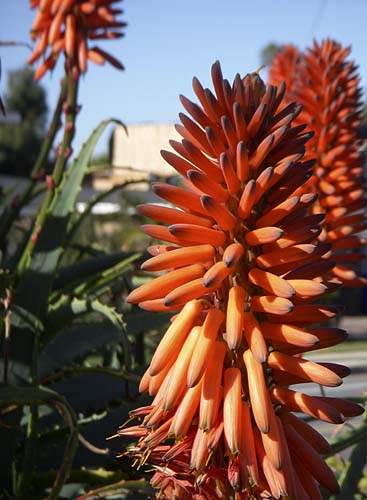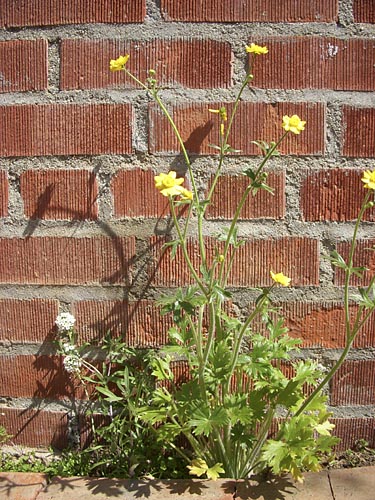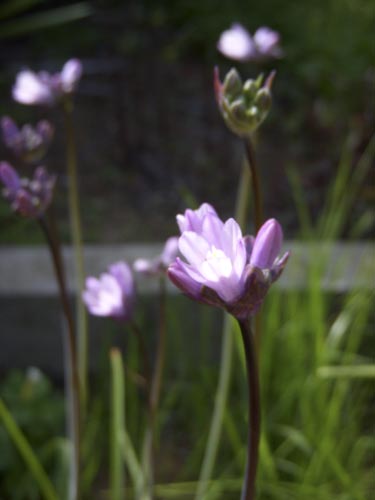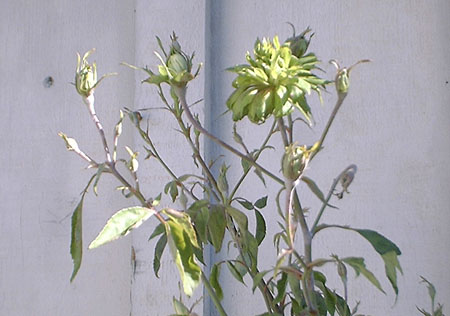Sorry. I don’t know the species, but it’s for sure an aloe, possibly Aloe arborescens. It’s pretty common in Southern California but spectacular nevertheless, especially in bloom:

This is the plant in the front yard. It’s now mounding something like 6 feet tall and maybe 8 wide, and covered with these tall spires of coral-orange-red flowers. You can easily forget that there are other things blooming.

Like other aloes, it originates in Southern Africa, if not South Africa proper. It left a Mediterranean climate similar to California’s, and thrives on the warm, dry summers and cool, moister winters. Some summers it endures more than a month with no supplemental water, and it’d survive just fine if it didn’t get half of how much it gets. But like many things it responds to a little coaxing, and with a little water looks a little less feral.
There’s a definite hierarchy among some ecologically-concerned though a little purist gardeners. Fake English country gardens that in the desert that is California require lots of water and are filled with overfed disposable plants blooming themselves to death are near the dregs of the dregs at the bottom of the list. Drought-tolerant landscaping rises lots higher. And in the highest regard are the drought-tolerant gardens that rely solely on native plants. So this aloe is a middle-of-the-road choice in social consciousness. If it were human it’d probably drive a Subaru and vote for fairly progressive causes, though it might be caught throwing recyclables out with the landfill trash or listening to Howard Stern.
It’s interesting that a plant can have been in cultivation here for a century or more and still be considered an exotic species. Human ancestors that might have brought the plant with them would now be long-gone, though their progeny could be considered native to wherever they were born. Biology, though, has a much longer memory, and with good reason.
Some of these species brought over from other places could take over the biota, just like the human exotics have pretty much displaced the native populations that were here before them. Those of us who aren’t Native Americans are the human kudzus, the human tamarisks, the human tumbleweeds–opportunistic colonizers of a benign new prospect. Some of these other garden plants could well go on to be the scourge of the continent. But in the end the plants and the immigrants all share the basic will to survive–survive first and ask moral questions later if at all.
Fortunately, this aloes seems content in its place as it gets bigger, and bigger, and bigger, shading its competitors and smothering smaller plants around it.
Uh oh.
Sure is pretty though, eh?






